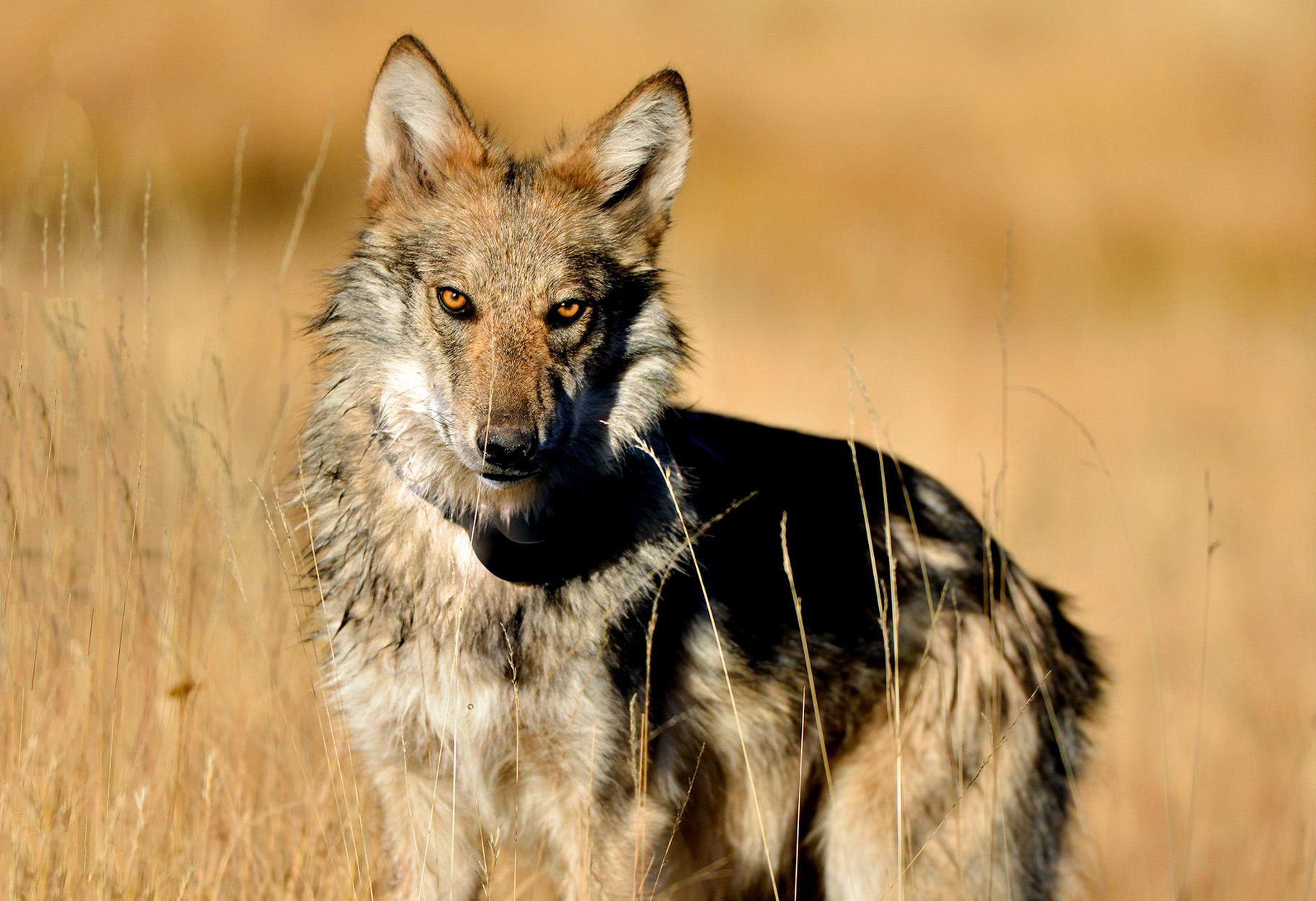Elected officials in Catron County, New Mexico, held a special meeting Thursday to declare a state of emergency over Mexican wolves. County commissioners, who voted unanimously in support of the resolution, spoke during the meeting of an emboldened and growing wolf population with little to no fear of humans.
Several ranchers and hunting outfitters provided public comment before the vote, as did the county sheriff. (Every local resident who spoke up during the meeting did so in support of the resolution.) They say depredations on livestock and pets have reached the point where residents now feel unsafe in the rural county, which borders Arizona.
“I’m here to protect the health, safety, and welfare of the people in this county, and we are scared,” Catron County commissioner Audrey McQueen tells Outdoor Life. “We’ve had deputies posted at the school this year so our kids can go out and play. I’ve got pictures of confirmed wolf kills of dogs right on people’s doorsteps. That is unacceptable.”
McQueen says the emergency declaration approved April 3 is a request to the governor for more resources. Under New Mexico law, counties can request state funds due to natural disasters, and commissioners contended in the meeting that the county’s wolf problem meets the definition of natural disaster — even if it is a man-made one. They will now bring the resolution to Gov. Michelle Lujan Grisham to sign, which they hope will result in more funding for range riders and other tools to protect their animals and neighbors.
Read Next: As Wolf Management Debate Reaches a Fever Pitch, the Interior Department Hires a National Mediator
Modoc County in Northern California approved a similar resolution in March over gray wolves. Elected officials there cited a series of confirmed wolf kills on six cows and one sheep that were near populated areas.
Judging by the numbers, though, the situation in New Mexico is even more dire.
“Just in the last few days, we’ve had two incidents — one where a wolf approached a man who’d pulled off the highway to go to the bathroom, and the wolf came up within two feet of him. Another guy, he’s 92, opened his front door to see a wolf standing 10 feet away,” McQueen says. “This is not normal. They’ve become habituated to humans, and that’s what we’re really concerned about.”
A fifth-generation Catron County resident and cattle rancher, McQueen deals with lobos on a daily or weekly basis, especially in the spring during calving season. She says their ranch abutting the Gila National Forest has lost between 110 and 130 calves to Mexican wolves annually over the last few years. (That’s in addition to an estimated 20 to 30 cows lost per year.) She explains that some of those have looked like “sport kills,” where animals were killed by wolves but not fed on.
Other ranchers and outfitters who spoke during Thursday’s meeting shared similar stories about being “covered up in wolves.” There are currently at least 162 Mexican wolves in Catron County alone, according to a U.S. Fish and Wildlife Service representative who spoke during the meeting and called this the minimum estimate. The estimated minimum statewide population in 2023, by comparison, was 144 wolves, according to the USFWS census that year.
McQueen says ranchers and others feel helpless against the growing population, since Mexican wolves remain federally protected in New Mexico, and they can only be lethally removed if they’re caught in the act of attacking or killing an animal. Even then, most ranchers won’t risk shooting a wolf because of the legal consequences they might face. Many have tried hazing, guard dogs, and other non-lethal methods, but McQueen says those only work temporarily.
“I had a calf killed last week inside the corral, just 200 yards from our front door. I don’t know what else we could do other than bringing them inside the house.”
Although programs are in place to reimburse livestock producers for their losses, McQueen says it has become increasingly difficult to prove wolf kills and federal assistance is hard to come by. McQueen is also the chair of the newly founded County Livestock Losses Authority, which helps reimburse ranchers in Catron, Sierra, and Socorro Counties.
What’s harder to calculate, she says, is the emotional toll and stress that lobos cause. Her 16-year-old daughter, Taylor, is still reeling from the loss of her favorite barrel-racing horse, Pickles, which was killed by a group of wolves in their pasture in November. She says when investigators with USDA Wildlife Services clipped and skinned Pickles’ carcass — the horse was worth around $15,000 — they noted hundreds of wolf-sized bite marks and heavy hemorrhaging around its neck and hindquarters.

“She’s lost two horses now to wolves … But [Pickles] was her best friend, her everything,” says McQueen. “And forgetting about the money, when you’re a parent, that is the most hurtful and hardest thing to see your kid going through.”
The impact of Mexican wolves in the county extends well beyond private ranches onto public land and neighboring national forests, where McQueen runs a big-game hunting outfit. She’s been guiding hunters in the Gila since she was 16, and like other outfitters — both in New Mexico and in other Western states — she’s seen how elk herds have changed their behavior due to the presence of wolves. She no longer hunts without a sidearm, either.
Read Next: The Return of Wolves to Colorado Will Change Elk Hunting There. Here’s How
“I’ve seen it myself, and I’ve heard report after report of guides and hunters who find an elk herd and start calling. And before they know it, they’re run off because the wolves come in on them. That’s a real problem. The elk tend to be quieter, too, because they know that talking will draw in wolf packs. They don’t bugle like they did 10 to 15 years ago.”

Even with all this, McQueen says most everyone in Catron County has accepted the fact that Mexican wolves are there to stay. They just want more management, more funding, and more freedom to protect their own property from the wolves that are spreading across the New Mexican landscape.
“If they would just allow us to manage [the wolves], we could live with them,” she says.
Just last week, the USFWS announced that yet another collared Mexican wolf had crossed north of Interstate 40, outside of the established recovery zone, and was up around Mount Taylor. Wolf advocates celebrated the journey, saying true recovery can never occur until lobos are allowed to expand their range.
Unlike the other two Mexican wolves that have crossed that imaginary line in the last three years, federal agents said they would not try to capture and relocate that wolf (which was nicknamed “Ella” by schoolchildren). As it turns out, they wouldn’t have to. On Sunday, the wolf was found dead near Mount Taylor. Its cause of death is unknown and is under investigation.
Read the full article here




